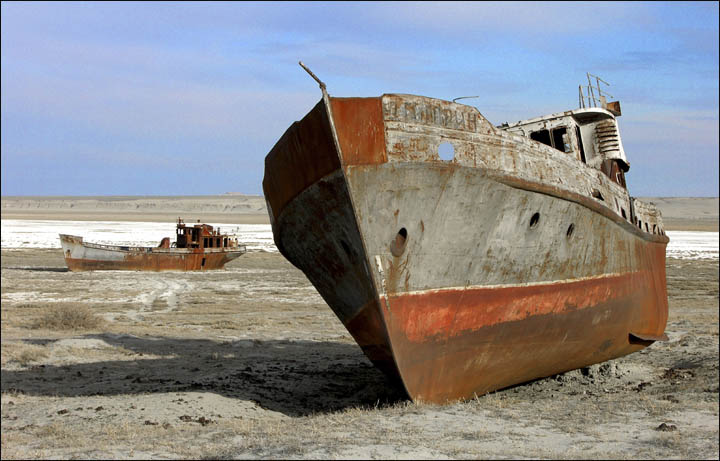
Sea vs. Lake
There is a very fine line of difference between a lake and a sea. They both are large water bodies, which is the one common factor between them. This also creates confusion, since the Caspian Sea is not a sea but a lake is often confused as such. A lake is a water body surrounded by land on all sides. They are a small living biological eco-system filled with fresh water. Whereas, a sea is composed of saltwater and is larger in size from a lake, surrounding land on most sides.
Comparison Chart
| Sea | Lake |
| Seas are water bodies which are not enclosed in all the sides and are one of the most important aquatic structures on earth. | Lakes are water bodies which are enclosed in all sides and play a small role in the environmental; aspects of a particular place. |
| Formation | |
| Seas are not inland water bodies and are sources of other water bodies like lagoons which are salty and separated from the source by coral reefs or some other geographical structure. | Lakes are inland water bodies which are formed as rivers and are separated from the main source by landforms. They’re also formed when water gets deposited in a narrow low lying area in a sloping land whose height is comparatively less than that of its surrounding area. |
| Composition | |
| Seas contain unfathomable diseases and are the home of thousands of organisms. | Lakes possess less depth and are home to a fewer number of organisms mostly fishes. |
| Classification | |
| There are no classifications when it comes to seas; they’re either big or small. | Lakes are widely classified into various types depending on various source of water, on the basis of formation. |
| Sources | |
| Seas act as sources to many of the water bodies and usually get their water supply from rivers and rainwater. | Lakes are water bodies that mostly get their water from glaciers, rivers, seas, and rain. |
A sea is a large body of saltwater which is surrounded, by land on all sides. More broadly, “the sea” is an interconnected system of Earth’s salty, oceanic waters, which are derived from all sorts of sources like rain, meteoric water, etc. It is considered as one global ocean or as several oceanic divisions. The sea moderates the Earth’s climate and has important roles in the water cycle, carbon cycle, and nitrogen cycle. It is also concerned with the phenomenon regarding rainfall distribution, as breezes carrying moisture from the sea bring rainfall to the adjacent lands. The modern scientific study of the sea, oceanography arrived broadly after the British Challenger expedition of the 1870s. The sea is conventionally divided into five large oceanic sections. The International Hydrographic Organization’s named four oceans (the Atlantic, Pacific, Indian, and Arctic) of which the second-order sections, such as the Mediterranean, are known as seas.
A lake is an area filled with water, localized in a basin that is surrounded by land. It is found far away from any river or other outlets that serves to feed or drain the lake. Lakes are water bodies, which lie on land and are not part of the ocean, therefore they are distinct from lagoons. They are also larger and deeper than ponds, though there are no official or scientific definitions of lakes. Lakes can be contrasted with rivers or streams, which are usually flowing. Most lakes are fed and drained by rivers and streams. The lakes are of two types, one whose water supply is usually provided by rivers and rainfall, and another whose water supply is provided by saline water, which is water from the seas. Natural lakes are generally found in mountainous areas, rift zones, and areas with ongoing glaciations. Other lakes are found in endorheic basins or along with the courses of mature rivers.
Key Differences
- A lake is primarily a freshwater body while a sea possesses a large amount of salt in it.
- A sea serves as a sources of water for smaller water bodies such as lagoons. On the other hand, lakes are formed from the freshwater supplied by rivers.
- Lakes do not have a permanent life span. They are formed but will eventually die out. Seas are part of the ocean and hence are constant.
- Some lakes are considered as seas because early explorers had made confusion in the nomenclature.
- Seas are sub-versions of oceans but lakes are not sub-versions of rivers.
Conclusion
Thus, it can be said that even though there lays a large number of differences when it comes to seas and lakes, both of their presence in the environment is necessary. Otherwise, there would be a scarcity of water and the ecological balance will be lost. Steps should be taken in order to lessen the drainage water of sewage, industrial wastes in water bodies because pollution turns the water of these water bodies into something unusable.
Aimie Carlson is an English language enthusiast who loves writing and has a master degree in English literature. Follow her on Twitter at @AimieCarlson
Differences Between Sea And Lake
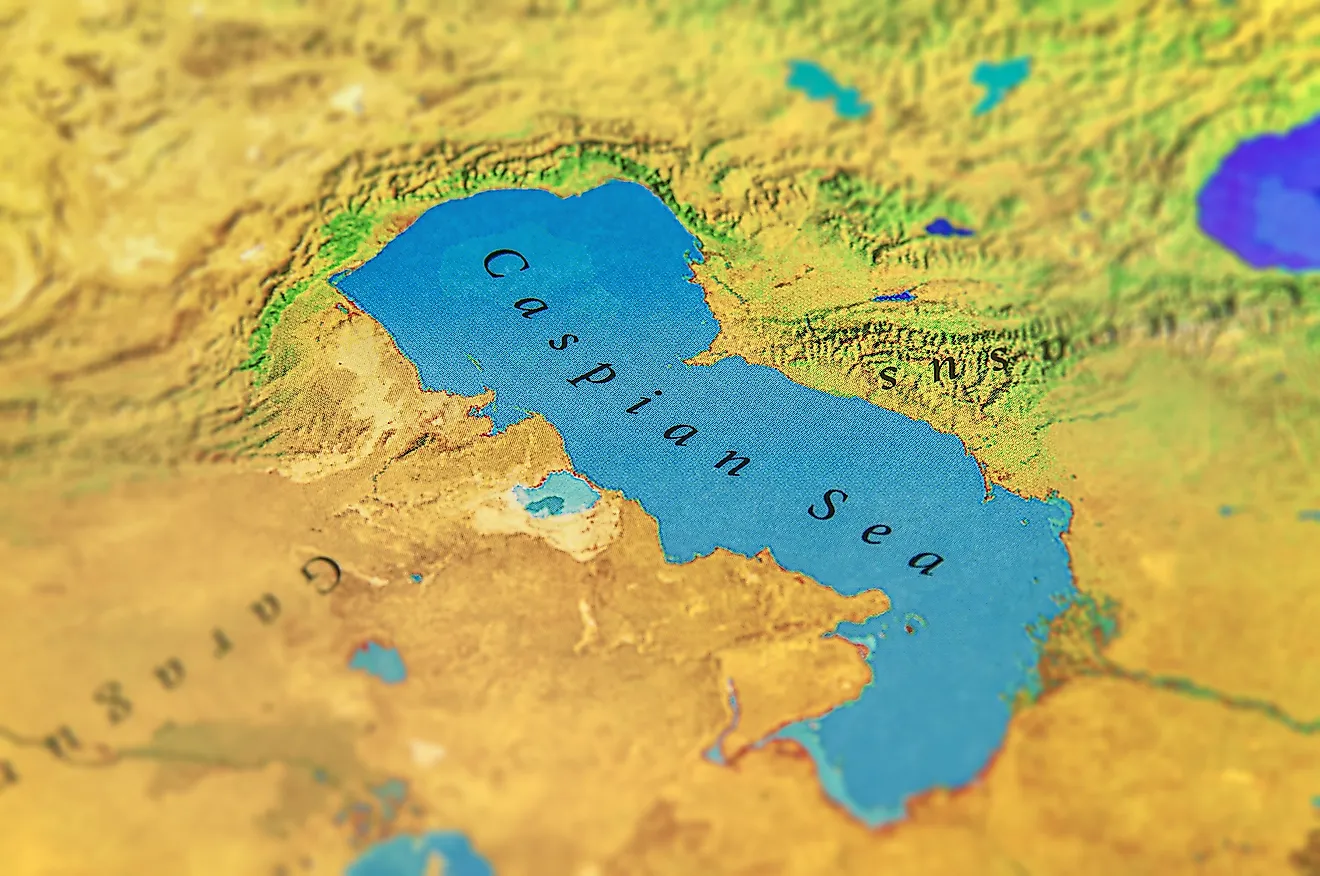
- A lake is enclosed on all sides by land and does not connect to a larger water body like an ocean, while a sea connects to an ocean.
- A sea is much larger and deeper than a lake
- A lake is either natural or artificial, while a sea occurs naturally
- A sea contains only salty water, while a lake can contain either salty or freshwater
The differences have been explained in greater detail below:
Brief Definition Of Sea And Lake

A lake is a stagnant, deep, hollow body of water enclosed on all sides by land. It is an inland water body with many sources or inlets of different characteristics, including rivers and streams. Lakes do not open or connect to any other planet reservoir or large water bodies such as oceans and sea. They are either naturally formed or artificial and are of different types, including tectonic and highland lakes.
On the contrary, a sea is a water body directly connected to a larger body of water – the ocean. Thus, a sea is a continuous stretch of water, mainly salty water opening to or emptying its waters in an ocean. Seas are broadly classified as internal or external. Internal seas, like the Mediterranean and the Black Sea, are almost enclosed by mainland and have access to the ocean via a strait. External seas, such as the Caribbean, are in the form of bays surrounded by islands.
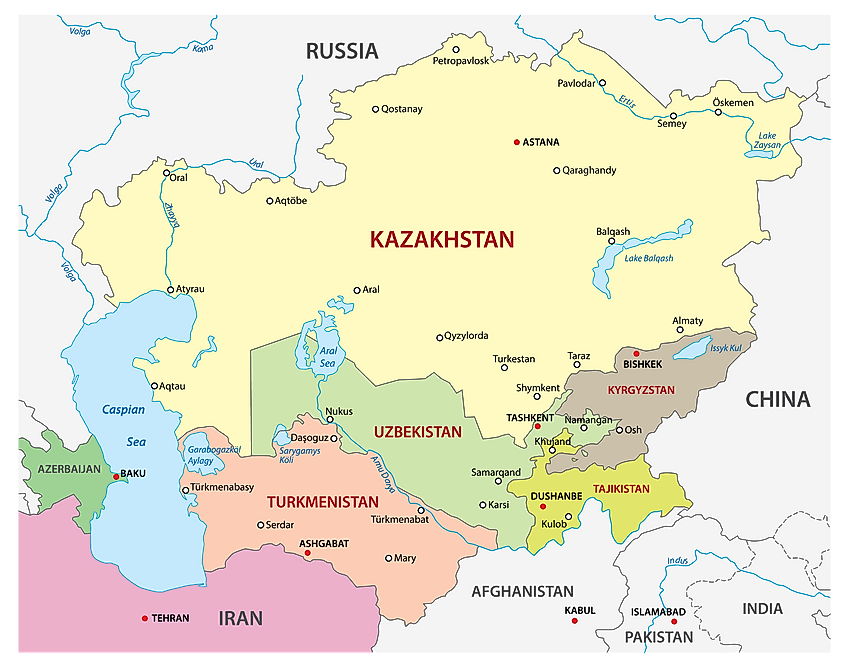
Size And Depth
Lakes are usually small, medium, or large in size, with water exposed towards the surface. The topography, size, and shapes of most lakes change over time, by either shrinking or overgrowing. Some lakes can even turn into swamps or dry up and disappear if inflow is cut off or insufficient. Most world lakes are shallower and have a surface area of below 100 square miles. However, a few lakes cover over 1.500 square miles.
On the other hand, seas are much bigger and deeper than lakes. They carry larger volumes of water than most lakes. Because of their sizes and connection to World Ocean, it is not easy for seas to dry up or disappear.
Type Of Water
Seas contain salty or saline waters, meaning they are always salty. One kilogram of seawater contains approximately 35 grams of various sea salts, including sodium chloride, magnesium sulfate, and magnesium chloride. The sea saltiness result from salt and minerals deposited by rivers flowing into the ocean or sea.
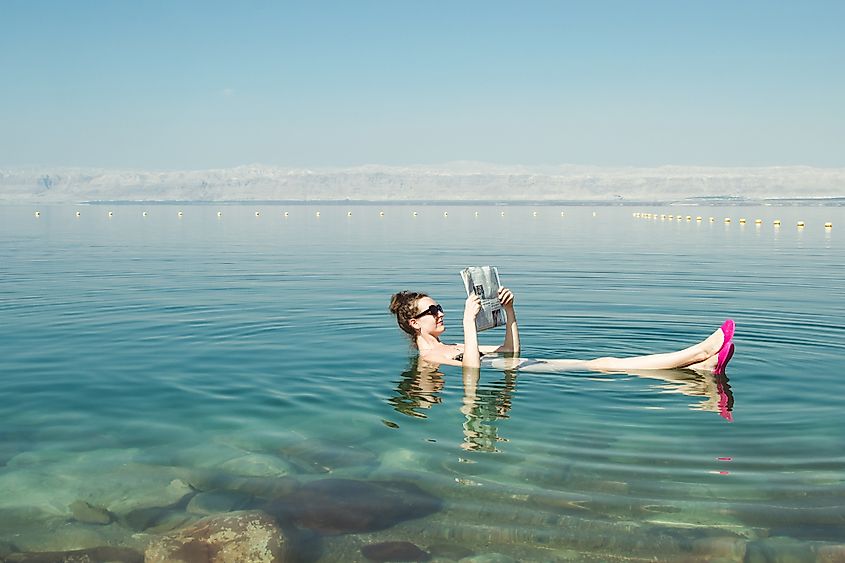
Lakes contain either fresh or saline water. Thus, there are freshwater lakes and saline lakes. The Dead Sea is the world’s most saline lake. Freshwater lakes contain freshwater because they are frequently replenished by rain or water flow in and out of them constantly. On the other hand, some lakes are salty because they do not have an outlet. Therefore, since rivers carry salt and other minerals into the lakes, as water evaporates, salts are left behind.
https://www.worldatlas.com/articles/differences-between-sea-and-lake.html
Meet Lake Baikal: Earth’s lar?gest, oldest, and deepest lake

- While most lakes form from rivers, dams, or the runoff of snow melt, Lake Baikal formed from a purely geological process.
- It holds more water than all of the Great Lakes combined, and is, in many ways, the greatest lake on the entire planet.
- Not only that, but it has recently become home to the greatest neutrino observatory in Earth’s northern hemisphere. Here’s what everyone should know about this remarkable, natural wonder.
Although practically all of Earth’s human population lives on dry land, our planet’s surface is 71% covered by water. Of that water, almost all of it is in the oceans, with just 2.5% of it in the form of fresh, rather than salt, water. Most of Earth’s fresh water is in glaciers, ice caps, permafrost, and water and ice beneath the surface. Most of the rest, as you might expect, is in the large reservoirs of liquid water on our land masses: Earth’s lakes.
All told, fresh water lakes make up just 0.007% of the total amount of water on Earth, but comprise the overwhelming majority of liquid fresh water on our surface. Most of Earth’s lakes are relatively young, less than 18,000 years old, having formed during the end of the last ice age. Only 20 lakes, worldwide, are ancient: more than 1 million years old. Lake Baikal is not only Earth’s oldest lake, at 25–30 million years of age, but also the largest, and the one with the most potential for revealing new discoveries at the frontiers of astroparticle physics. Here’s the fascinating science behind it.
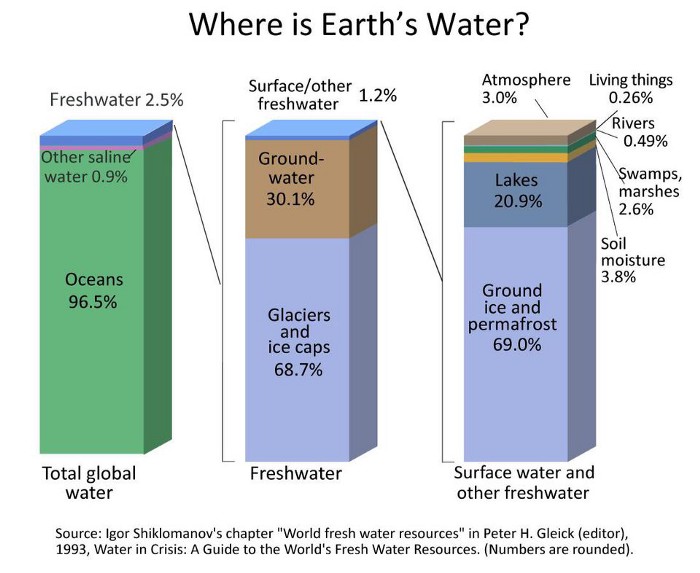
Earth’s lakes are the primary location where liquid, surface fresh water is held, but most of them were formed by the retreat of glaciers. The majority of Earth’s fresh water is frozen, in the forms of glaciers and ice caps, and this becomes much more severe during ice ages: where the polar caps grow large and extend down to much more equatorial latitudes than their present locations.
When the ice ages end,
- much of the frozen water melts,
- leading to glaciers carving out paths and causing erosion,
- with glacial melts (and subsequent rainfall and seasonal changes) leading to the formation of lakes (and rivers),
- and subsequent drainage patterns leading to additional lake formation.
For example, the entirety of the Great Lakes, the most prominent fresh water features in North America, formed from the melt of glaciers, possibly repeatedly, and all drain into the Atlantic Ocean via the 3700 km-long St. Lawrence River.
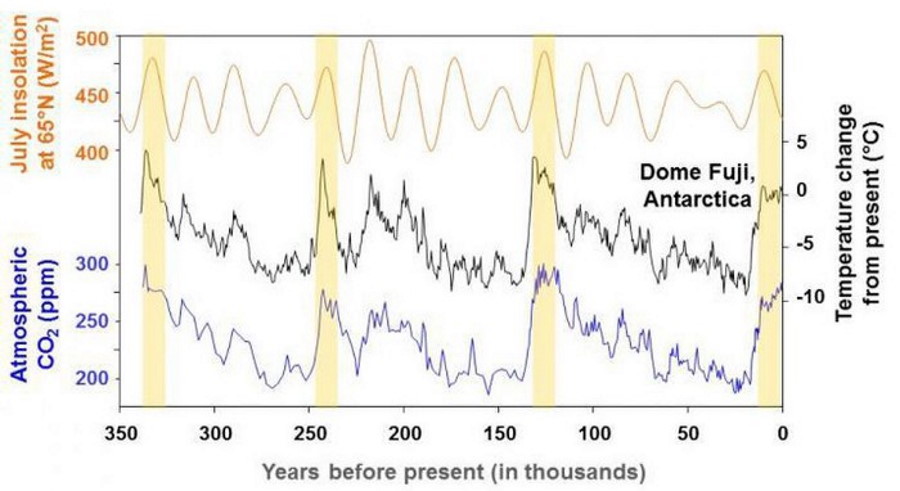
Earth experiences ice ages relatively frequently, with interglacial periods separating them on timescales a little greater than every 100,000 years. Almost all of the lakes presently found on Earth’s surface were created during these recent glacial/interglacial period transitions. If a lake was created from these processes, it likely won’t last very long. The majority of lakes, over long timescales, will be filled with sediments deposited from inflowing rivers.
But there are some very prominent exceptions. Not every lake has a river or stream to flow into it, and not every lake was formed as a result of glacial/interglacial cycles and transitions. Rather than living thousands of years and having maximum depths of only a few hundred meters (up to 1,300 feet), there are a few lakes found throughout the world that are ancient and super deep: millions of years old and over a mile (1,600 m) deep.
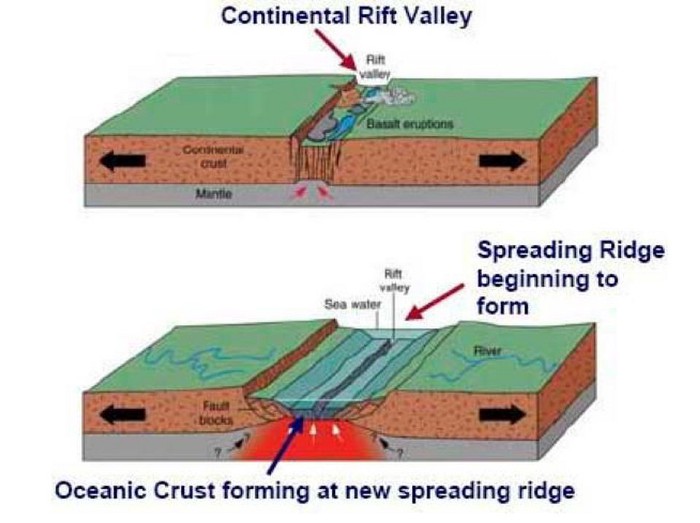
The ancient lakes found on Earth are few in number, but all have something in common: they’re all found in active rift zones as a consequence of plate tectonics. Wherever two of the plates of Earth’s crust move apart from one another — such as at a divergent plate boundary — a rift valley can begin to form. Over time, the forces of erosion will deepen this rift valley, creating an enormous and deep pit.
What begins as a chasm with two steep, nearly parallel sides eventually widens and fills with sediment from the rift walls or, if the conditions are right, fresh water. Of all the ancient lakes over 1 million years old found on Earth, an enormous 75% of them were formed by this very process, with the exceptions resulting from events like meteor impacts and a volcanic feature.
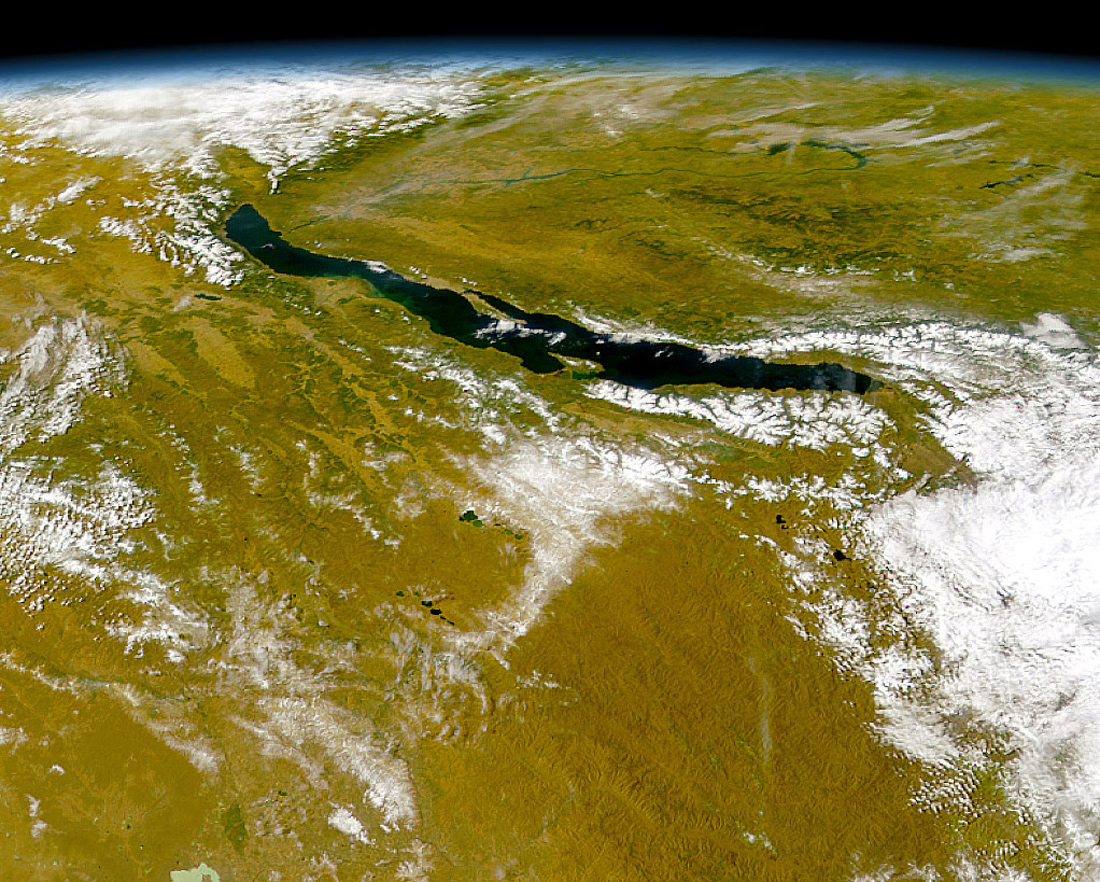
To look at it from above, Russia’s Lake Baikal appears impressive, but not spectacularly so. Found in southern Siberia, it’s barely half the surface area of Lake Michigan, coming in at #7 among the world’s lakes at a little over 31,000 square kilometers (12,000 square miles).
However, the regions on either side of Lake Baikal are at extremely high altitudes, with many locations exceeding 2000 meters (nearly 7,000 feet) in elevation. It’s located at exactly a divergent plate boundary, having spread apart so significantly over time that the lake is up to 79 kilometers (49 miles) wide, and has three separate basins to it.
The deepest one — the central basin — goes down to a depth of 1,642 meters (5,387 feet), making it the deepest lake in the world.
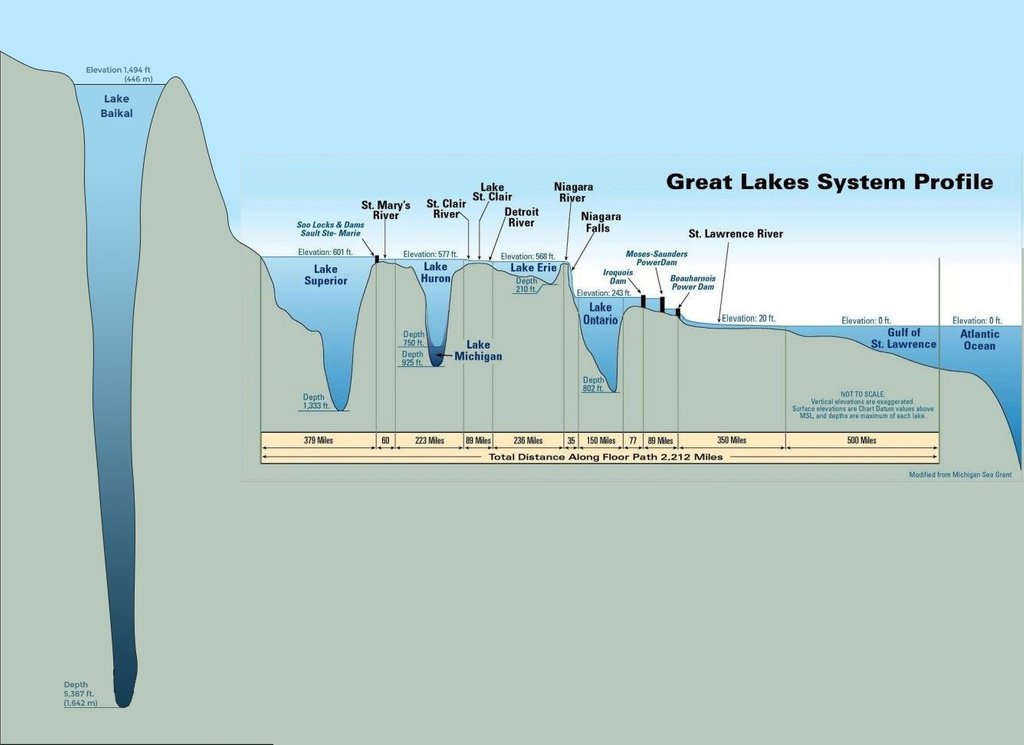
How much water does Lake Baikal hold?
If you were to take all of the fresh surface water in the world and add it up, you’d wind up with enough to fill a cube approximately 35 km (22 miles) on each side. This includes all the lakes, rivers, streams, swamps, marshes, living creatures, and even the water in Earth’s atmosphere.
Lake Baikal, which holds more fresh water than any other lake on Earth, is responsible for a whopping 22% of it: over 23,000 cubic kilometers (5,600 cubic miles) worth. It contains double the amount of water found in Lake Superior, five times the amount found in Lake Michigan, and more than all of the North American great lakes combined.
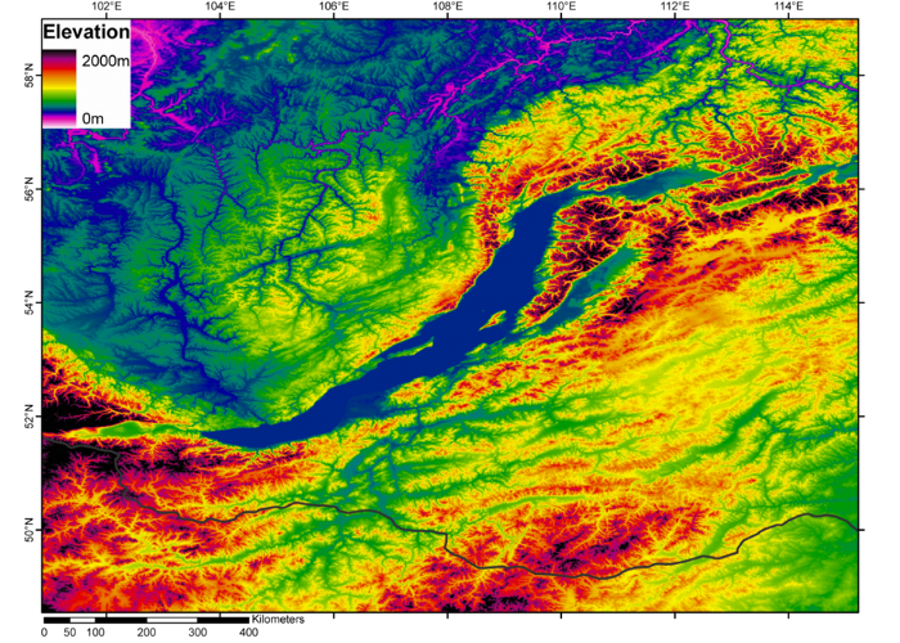
How unique is Lake Baikal?
The bottom of the lake is more than a full kilometer below sea level, but the rift valley that created it goes far deeper. According to research at the University of Alaska, Fairbanks, there are approximately an additional 7,000 meters (23,000 feet) of sediment that have fallen into the rift valley over time, placing the rift floor an incredible 8-to-11 kilometers (5-to-7 miles) beneath the surface. This makes the geological rift that’s home to Lake Baikal the deepest continental rift on planet Earth.
As impressive as these facts are, it’s important to think geologically: this continental rift is both young and active. With every year that goes by, the rift widens by approximately 2.0 centimeters (0.8 inches). There are more than 300 rivers that feed into Lake Baikal, but only one — the Angara River — that drains it.
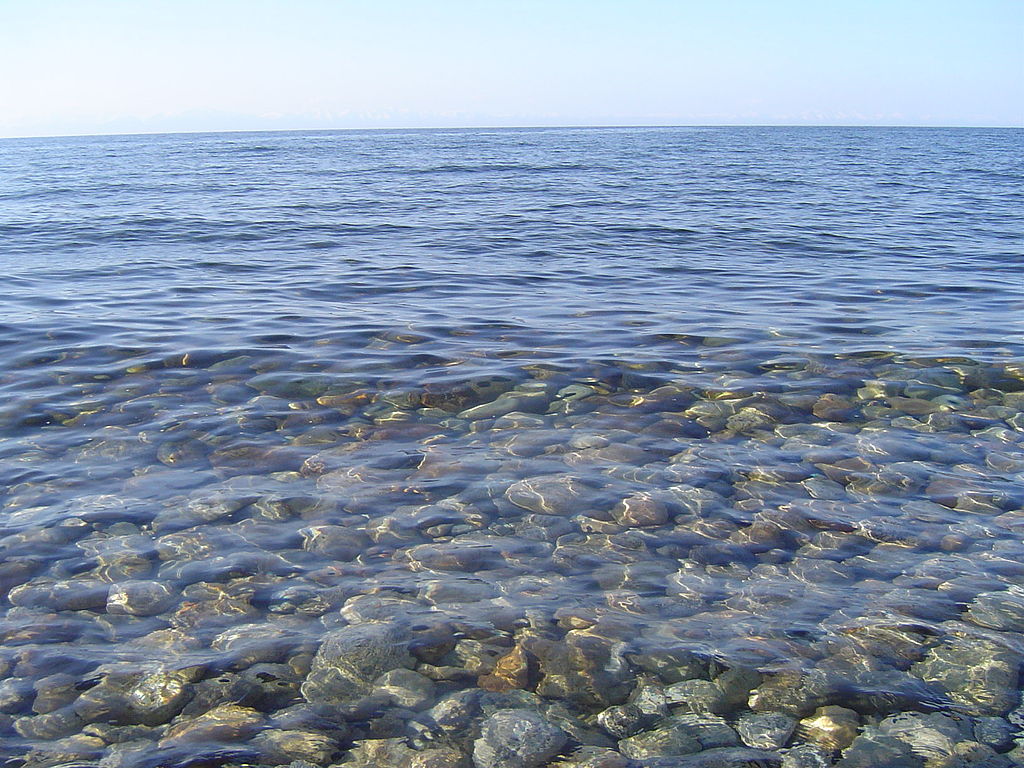
How pristine is Lake Baikal?
Every other large, high-altitude lake on Earth has, in its geological history, been covered with ice sheets from previous glacial periods. When the glacial periods end, those continental ice sheets ride over them, scouring the lakes.
But not Lake Baikal. Uniquely among these lakes, its sediments show no evidence of these ice sheets riding over them. Instead, deep-drilling core sediments (the deepest bottom of the lake was first reached in the 1990s) show how the climate has varied over nearly 7 million years of recent history. Unusual crystalline solids known as gas hydrates are found within Lake Baikal, making it the world’s only confined fresh water lake to possess them.
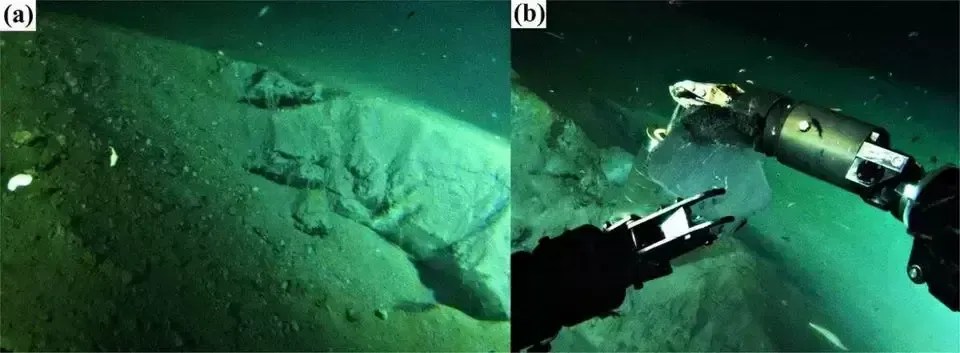
How old is Lake Baikal?
Based on the geology of the lake alone — but supported by water and sediment studies — Lake Baikal is estimated to be between 25 and 30 million years old. It is very rare to have a lake on Earth that persists for more than 10 million years (only five are candidates), and the evidence for Lake Baikal’s old age is overwhelming.
Other very old lakes include Lake Issyk-Kul and Lake Maracaibo, both of which are saltwater lakes rather than fresh water, and their ages are uncertain. Kazakhstan’s Lake Zaysan is the only lake that might be older, as substantial evidence dates it to the late Cretaceous, more than 65 million years ago. However, the exact age of that lake remains controversial; Lake Baikal remains the oldest lake on Earth without large uncertainties in its age.
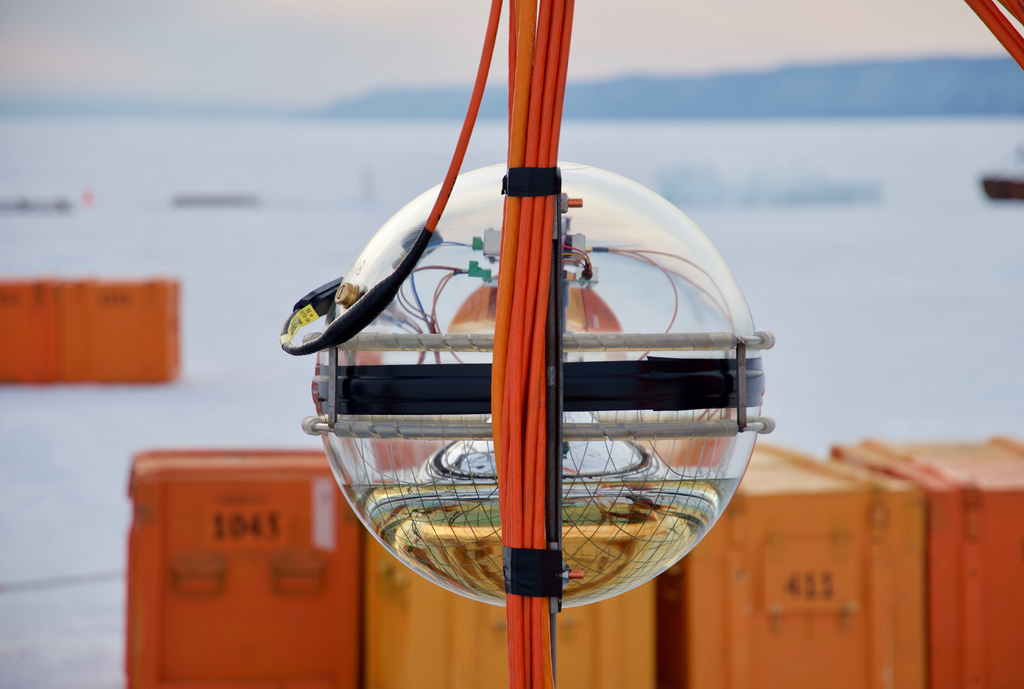
What scientific potential does it have?
The deeper underwater you go, the more shielded you are from atmospheric and space-based signals, including cosmic rays and other sources of stray particles. This makes for a close-to-pristine environment for the detection of the most ghostly of the known particles: neutrinos, so long as you have very pure water. Lake Baikal, being the deepest freshwater lake in the world, offers tremendous potential to serve as an unprecedented neutrino detector, and to perhaps even rival the greatest current one on Earth: IceCube, located at the South Pole.
In March of 2021, the Baikal-Gigaton Volume Detector was plunged into the depths of Lake Baikal, where it’s located between 2500 and 4300 feet beneath the surface. With 288 optical modules, it takes advantage of the Lakes unique properties of:
- depth,
- fresh water nature,
- unique water clarity,
- and significant ice cover during numerous months out of the year,
enabling it to perform neutrino science that is inaccessible from most other locations on Earth.
In addition to the physics applications inherent to this unique environment, there’s also a tremendously rich biodiversity found exclusively here, and nowhere else on our world.
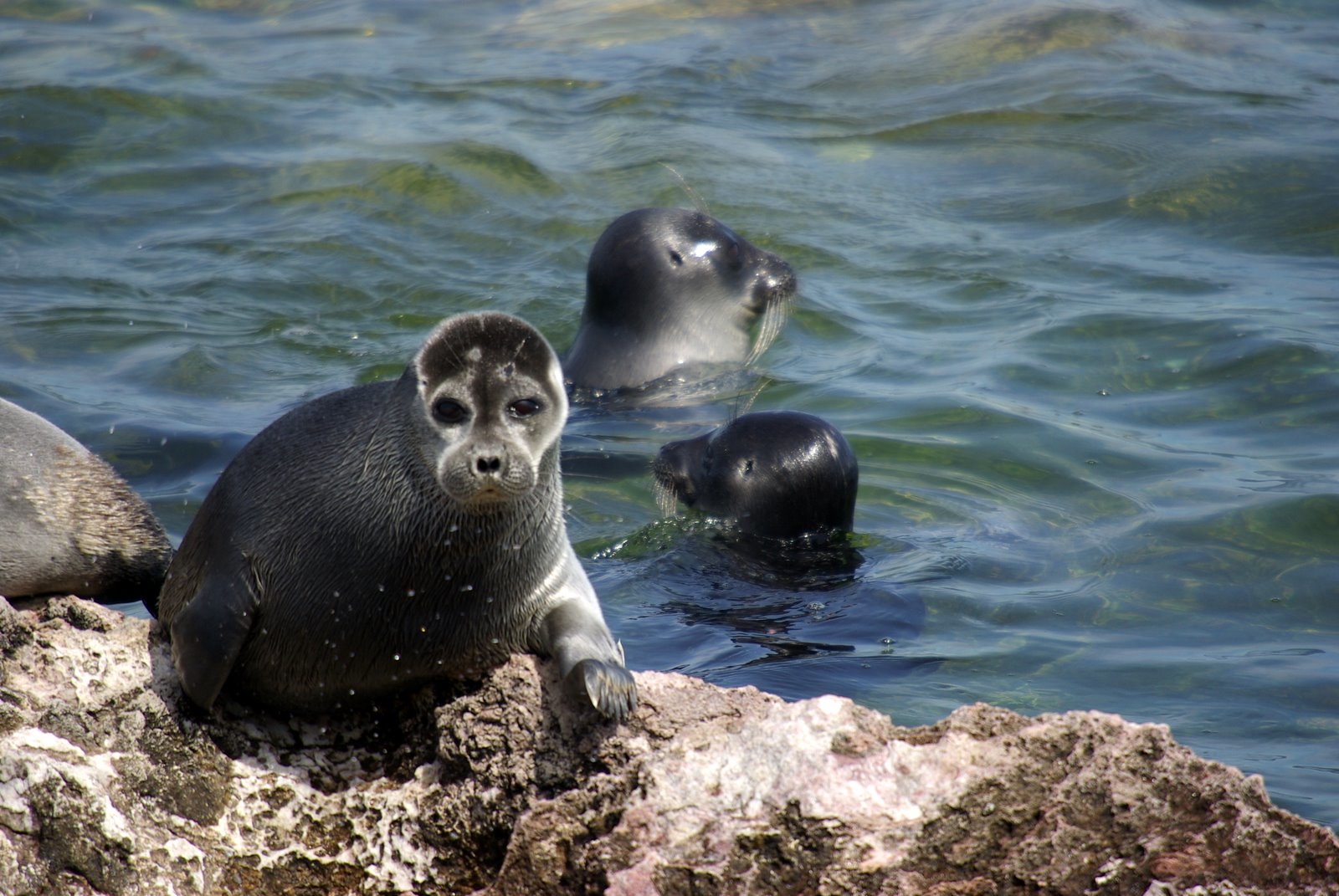
Lake Baikal is not only the largest, deepest, and oldest lake in the world, but houses around 2,000 unique known species of animal that are not found anywhere else on Earth. Although it is protected as a UNESCO World Heritage Site, the average surface temperature of Lake Baikal has risen by 1.5 °C over the past 50 years. Along with chemical pollution in Lake Baikal, this unique ecosystem, left pristine for millions of years, is now changing faster than ever before.
Yet perhaps what’s most remarkable about Lake Baikal is the view it gives us into how Earth evolves with time. The geological processes at work here are the same ones that caused the ancient supercontinent of Pangaea to break up, and resulted in the formations of Earth’s oceans. Perhaps, hundreds of millions of years from now, the rift valley that is now home to Lake Baikal will become a saline body connected to our oceans. It is, by many measures, the greatest lake on our entire planet.
The world’s largest freshwater lake is shrinking
Wikimedia Commons
ST. PETERSBURG, Russia (Thomson Reuters Foundation) – In Russia’s Siberian south, near the border of Mongolia, the world’s largest freshwater lake is shrinking.The surrounding communities depend on Lake Baikal, which contains about one-fifth of the earth’s unfrozen freshwater reserves, for their power, water and livelihoods.
But in the past four months the lake’s water level has dropped so low that experts are calling it a crisis – one they warn could lead to conflicts in Russia over water.
The lake is now at its lowest level in over 30 years and experts predict it will keep dropping until melting mountain snow and spring rains begin to recharge the lake around late April or mid-May.
The problem, scientists and environmentalists say, is a combination of climate change and growing use of hydropower.
During last year’s unusually dry summer and autumn, the lake got only 67 percent of the freshwater inflow it normally receives; experts predict in the first quarter of 2015 that figure will fall to 50 percent.
Meanwhile, hydropower stations along the lake’s feeder rivers continue to draw water into their holding reservoirs at the normal rate, leaving the lake depleted, experts say.
Lake Baikal’s dramatic drying already is causing tensions between the two regions that rely on it. In the Buryat Republic, upstream of the lake, wells are running empty and the area’s fishing industry is struggling with decreasing fish populations.
Downstream, the people of the Irkutsk Oblast region who depend on the lake for their water and electricity supply are demanding they continue to have access to it despite the falling water level.
“Welcome to the era of water wars in Russia,” said Alexander Kolotov, Russian coordinator of the international ecological coalition Rivers Without Boundaries. “Water is becoming the country’s most valuable resource.”
HYDROPOWER TO BLAME?
In late January, the Ministry of Natural Resources and Environment introduced daily monitoring of lake levels in an effort to reverse the drying of the lake.
For now, the government is allowing the Irkutsk hydroelectric power station to continue drawing river water that might otherwise have supplied the lake in order to keep the region supplied with heat, power and clean water.
“We are trying to pursue a balanced approach that takes into consideration the interests of all stakeholders,” said ministry spokesman Nikolay Gudkov. “But that is not easy.”
But a number of scientists and environmentalists have criticized the government’s decision, saying the Irkutsk hydropower plant and the four others in the region are draining the lake and damaging the area’s eco-systems.
Sergey Shapkhaev, director of the Buryat Regional Baikal Union, a local non-governmental organization, argues that the lake’s low water level will kill fish and crucial microorganisms. That, in turn, could result in less fish available to local communities.
“Microorganisms also play a vital role in ‘cleaning up’ the lake’s water after the inflow of rivers,” he said. “A reduction in their numbers might affect the water quality.”
He said drying peat reserves on the lake’s shores could mean the region will suffer more of the peat and forest fires that break out every summer.
Wikimedia Commons
WORSE TO COME?
For some climate experts, the shrinking of Lake Baikal is a sign of worse to come.
Extreme weather, they say, will bring about major fluctuations in bodies of water all over Russia. According to a report on climate change and its consequences in Russia published by the state meteorological service Roshydromet in July 2014, the country is facing a future of unprecedented and unpredictable cycles of drought and flooding.
“Russia remains a region of the world where warming of the climate in the 21st century will significantly exceed average global warming,” the report warned.
In early February, Russia’s environmental minister Sergey Donskoy told a sustainable development summit in New Delhi that the number of dangerous natural disaster events in the country increased by 6-7 percent annually over the last few years. He said that number could double within the next decade.
But there are also experts who say Lake Baikal’s current low level is nothing to worry about.
Mikhail Grachev, director of the Limnological Institute of the Russian Academy of Sciences, says there is no immediate threat to the lake’s ecosystem. Lake-level fluctuations are a common occurrence, and have not had long-term negative effects, he told RIA Novosti in January.
That is of little comfort to the people living around the lake. Natalia Tumureeva, a resident and representative of the Buryat Regional Baikal Union, claims that up to 27,000 people in the area are already without water as the wells in villages on the lake’s shores have gone dry.
The Union has joined with a number of other environmental NGOs – including WWF Russia and Greenpeace Russia – to come up with recommendations for the hydropower industry on how to work with climate patterns and decrease the burden on the lake’s eco-system.
They include asking energy companies to tailor their water intake to the lake’s natural cycles and lower the rate at which they siphon water from the lake in low-water periods.
With experts predicting that variable weather will become the norm, the region will have to learn to expect drastic changes in Lake Baikal’s water levels, experts say. “We certainly need adaptation in the area,” said Alexey Kokorin, head of the climate and energy program at WWF Russia.
Read the original article on Reuters. Copyright 2015. Follow Reuters on Twitter. https://www.businessinsider.com/r-in-russia-a-drying-lake-threatens-an-era-of-water-wars-2015-3?international=true&r=US&IR=T
Extreme warnings issued that Lake Baikal could ‘drain dry like the Aral Sea’
The lake’s level is falling, and Mongolian hydro plans would disrupt inflows, and could cause a ‘tsunami’ of water, say campaigners.
‘Baikal might share the destiny of the Aral Sea.’ Picture: Zhanat Kulenov
Newspaper Izvestia this week was blunt in assessing the eco-damage threat to Baikal, a natural reservoir which contains around 20% of the world’s unfrozen freshwater.
‘Baikal might share the destiny of the Aral Sea,’ it stated. ‘Construction of three hydro power stations on the Selenga River and its tributaries can cause the unique lake to dry out.’
The 25 million year old lake – a UNESCO world heritage site – is ‘on the edge of environmental catastrophe and if certain measures are not taken, it might disappear just like the Aral sea.’
The impact of proposed Mongolian hydro projects could also be to threaten the Buryatian capital city, Ulan-Ude, in the event of an accident to one of three planned dams.
Environmental activist Sergey Shapkhayev warned: ‘Potential damage from the third hydro power station which will be located on the Eg River (a Selenga tributary) could cause a huge catastrophe. Hydrological experts believe that this power station is the most dangerous of all.

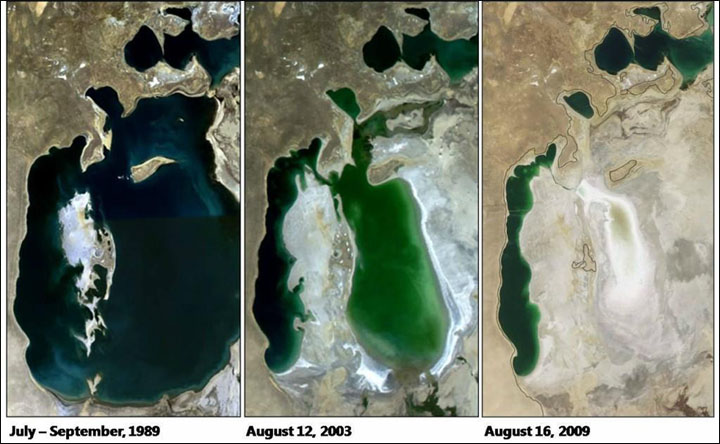
The Aral, once one of the four largest lakes in the world, has substantially dried up due mainly to Soviet planners diverting rivers to use for irrigation projects. Pictures: Anna Baranova, Satellite images USGS
‘This power station will be located in the seismically active part of Mongolia. And any seismic activity can cause all the stored water to wash away part of Mongolia and in half a day it would reach Ulan-Ude’ – a city with a population of 415,000. At the same time, speed of water will be compatible to tsunami.’
The warnings come amid new hopes in Russia that ways can be found to persuade Mongolia not to go ahead with the the hydro schemes – see our earlier story here.
Izvestia said that the claims about an Aral-like denuding of Baikal were aired at a closed doors meeting at the Energy Ministry. Crucial to the dams not being built are an offer acceptable to Mongolia of guaranteed cheap energy – from Russia.
Another session held at the Ministry of Natural Resources in April heard that the Mongolian plans would lead to atmospherical, biological, hydrological and geological changes.
‘The quality of water, its ice and temperature regime will also change,’ according to this account. ‘Additional emission of greenhouse gases will increase the threat of flooding of some areas. The migration of animals, rare fish species in particular, will also be negatively affected. Apart from that, the implementation of these hydro-technical projects will cause additional seismic, epidemiological and other risks.’
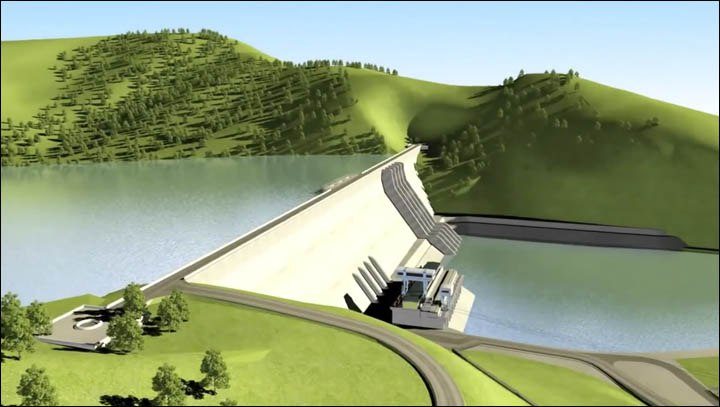
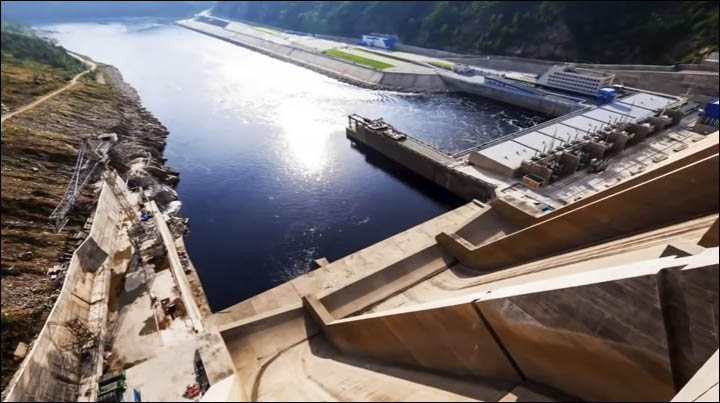
‘Potential damage from the third hydro power station which will be located on the Eg River (a Selenga tributary) could cause a huge catastrophe. Pictures: Eg River Hydroelectric Project
Other warns suggested an acute risk of pollution in the Selenga feeding into Baikal. And separately, the existing fall of the lake’s level has already led to wells running dry located as far as 300 kilometres from Baikal.
Residents of 13 settlements on the Baikal shore are also facing difficulties with water supply.
Oleg Lebedev, a member of the Higher Environmental Council, and a deputy of the Russian parliament, said: ‘We have unique scientific potential and expertise in construction, and that is why it is possible to transfer power from Siberia and develop new export agreements.
‘Otherwise less than 1,000 GW of power will destroy the largest unfrozen water reservoir on the Earth, (and) will destroy the delta of the Selenga River and cut access to fresh water in Buryatia and Irkutsk region.’
Andrey Grozin, of the Institute of the CIS countries, warned: ‘The hydrological resources of Mongolia are not sufficient to produce significant power capacities. The three rivers discussed now do not have particular potential to generate enough power to sort out the electricity deficit.

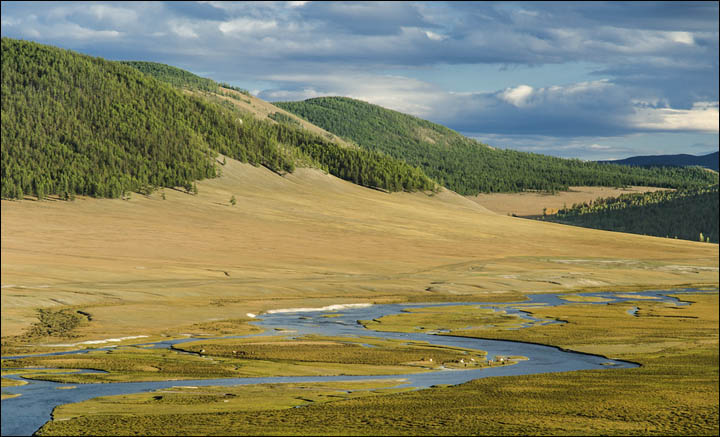
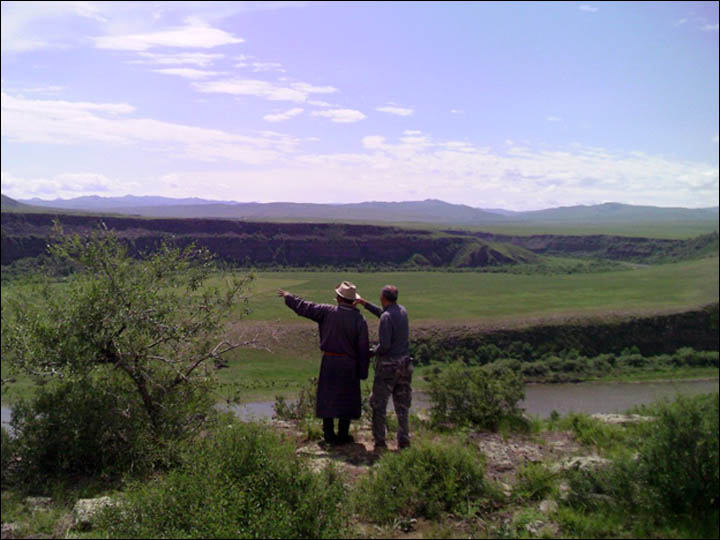
‘The three rivers in Mongolia discussed now do not have particular potential to generate enough power to sort out the electricity deficit.’ Picture: Dr Jaroslav Vrba/UNESCO-IHP, lusika33, Rivers without Borders
‘Of course, it’s easier to build a hydro power station – green energy – but it’s clearly an exaggeration to consider that hydro power can become main power source for Mongolia.’
Irina Maksimova, scientific secretary of the Baikal Scientific Council, claimed an unprecedented ‘catastrophe’ would befall Baikal.
The comparison with the Aral Sea – which was a giant endorheic lake lying between Kazakhstan and Uzbekistan – appears far-fetched even allowing for a grave threat now facing Baikal.
The Aral, once one of the four largest lakes in the world, has substantially dried up due mainly to Soviet planners diverting rivers to use for irrigation projects. Yet before it suffered grievous ecological damage, the volume of water in the Aral was some 1089 cubic kilometres. By 2007 it has reduced to just 75 cubic kilometres.
By comparison Baikal – covering an area larger than Belgium – contains some 23,615 cubic kilometres of water. https://siberiantimes.com/ecology/casestudy/features/f232-extreme-warnings-issued-that-lake-baikal-could-drain-dry-like-the-aral-sea/

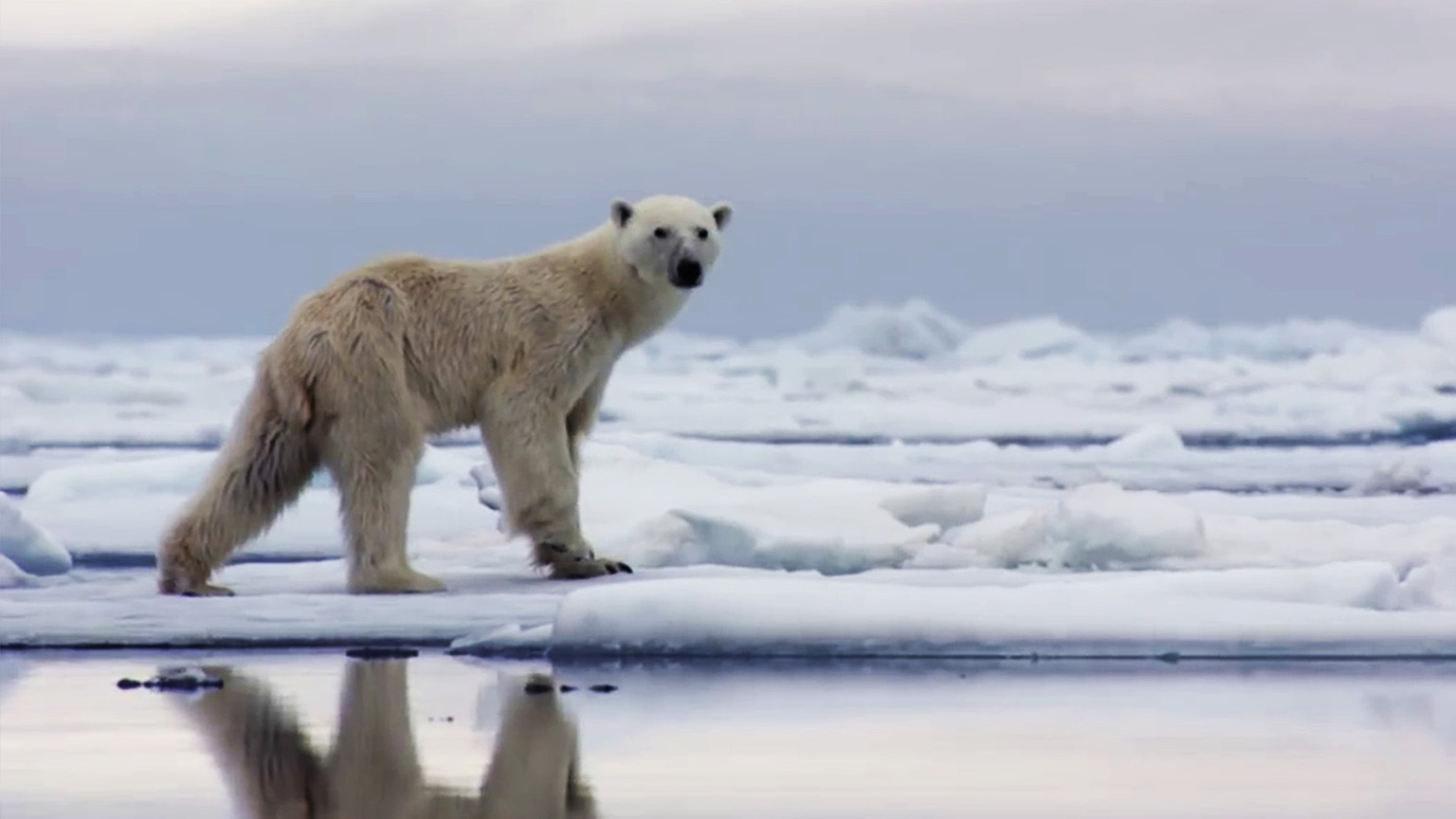
Climate change is an existential threat not to humanity but to our project of civilization
https://bigthink.com/13-8/civilization-climate-change-existential-threat/

